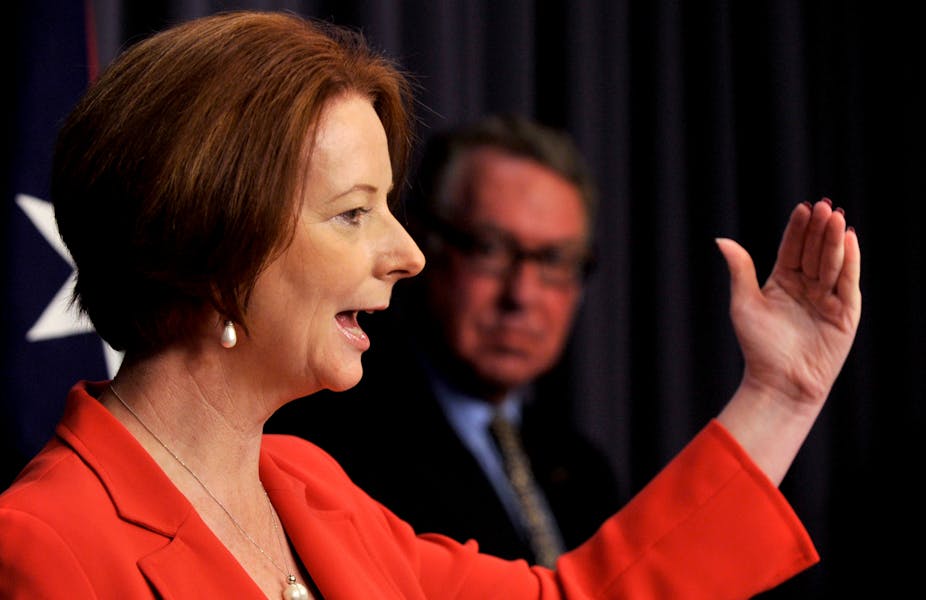The last time school funding occupied so much public and political attention was during the Whitlam years.
Policy makers with long memories will recall that the gestation period for the Karmel report was well over a century – from turning off the tap of state aid to denominational schools to redirecting it towards a uniform, free, secular and compulsory state school system.
But now the Gonski review has re-ignited the debate, and many are asking what the government means to do with the review’s recommendations - especially the issue of funding.
Former federal minister and Gonski review panel member Carmen Lawrence has criticised the government’s slow movement, saying they have turned their backs on public education.
She joins a growing coalition of government and non-government school interests has expressed impatience at the reluctance to commit to the annual extra $5 billion in school funding that Gonski recommends. The Australian Education Union has launched a campaign this month too, focusing on the funding issue.
But curiously, the largest non-government provider, the National Catholic Education Commission, has remained aloof. Moreover Professor Peter Tannock, who represented the Catholic sector on the Gonski Review panel, has maintained an astute silence on the issue.
Nevertheless, the pressure on the Minister to cave into the clamour for an unconditional commitment of an extra $5 billion funding per year is intense. But funding is not the only issue here. Structural reforms and an expectation of improved educational outcomes, especially for the disadvantaged are needed just as much.
After all, a budget blow-out was not all that Gonski intended to achieve. When hard times reassert themselves, it is the other reforms that will be important.
Deep-rooted dilemma
In the 1960s, the battle was underway for state aid. The Catholics had for nearly a century reluctantly chosen to “go it alone”, operating their schools for a pittance with the unpaid labour of many religious orders and congregations.
The solution was to invoke Sections 96 and 51 of the Constitution enabling the Commonwealth to grant money to any state, “on such terms and conditions as the Parliament thinks fit”.
In effect, the Commonwealth could make grants subject to states implementing particular policies in their fields of legislative responsibility.
The Commonwealth has subsequently withstood a High Court challenge relating to its influence over state policy matters on hospitals and schools.
The history of resolving the state-aid issue in Australia has, therefore, arguably created as many problems as it has solved, mainly relating to the increasingly different social demographics that attend public and private schools.
This accounts for Australia having the largest (and growing) publicly-funded private school system in the world, simply because all non-government schools must charge fees to break even.
Solving one problem, causing another
In resolving the state-aid issue, the 1973 settlement perversely created a new problem about inequity in school education. In acknowledging supplementary research on these issues, the Gonski Review has wisely focused on school reform with additional implications for funding and equity policy.
In the current tight fiscal climate, there is considerable pressure to reduce Gonski to its annual extra $5 billion funding investment recommendation. While temporarily solving the capital investment issue, this would reopen the war on who should get the money.
AEU/Youtube
Fortunately David Gonski has provided a strategy to address this problem through his other recommendations.
First, he has called for school reform initiatives to reflect much closer Commonwealth-state ties.
Second, he has called for a much closer systemic integration within and between various school providers so that public funding more efficiently reflects national education reform agenda.
Third, he has identified what those targets should be, which, apart from allocating a fixed entitlement per student across all systems and providers, assigns additional funding in respect of disadvantaged groups, including indigenous students, rural and remote schools and students with disabilities.
What next?
An opportunity now arises for the Government to respond by outlining additional terms and conditions linking funding increases with a commitment to enrolling disadvantaged students.
While some independent providers may reject this as undue interference, others will welcome the challenge to show that their success is a direct consequence of better teaching and not a commitment to excluding those low-socioeconomic status (SES) learners who fall into the too-hard basket.
Rejecting such new conditions would then justifiably result in increased costs being passed onto parents through fee increases.
A further condition for such enrolment should be that low-SES and disadvantaged enrolments would have any additional fees met from the public purse.
The biggest opportunity here will be for low-fee schools, especially the Catholic diocesan systems, who teach that their schools are “first and foremost” for the poor, but who, because of the need to bridge the shortfall between costs and funding, currently fill a cheap private school niche in the school market.
The benefit to state schools lies in the opportunity to win back the unconscionably large numbers of aspirational middle-class students they have lost to the burgeoning private secondary sector, while having to unjustifiably cope with the responsibility of educating a disproportionately large number of low-SES and disadvantaged enrolments.
I do not foresee a successful constitutional challenge to such policy tweaking, since state governments already fund some aspects of private school provision.
Moreover, the Australian Education Union, which opposes funding for non-government schools, would have its most damning criticism of private schools – that they are exclusive - met and rectified.
Finally, the fallacy that differentiated teacher salaries trigger improved school results would make way for a more substantial discussion about more equitable and diverse school provision, resulting in improved outcomes, reflecting factors such as community values, teacher attitude, school climate and parent choice, instead of regarding better outcomes as the dubious and short-term consequence of more unconditional and potentially wasteful public spending.

